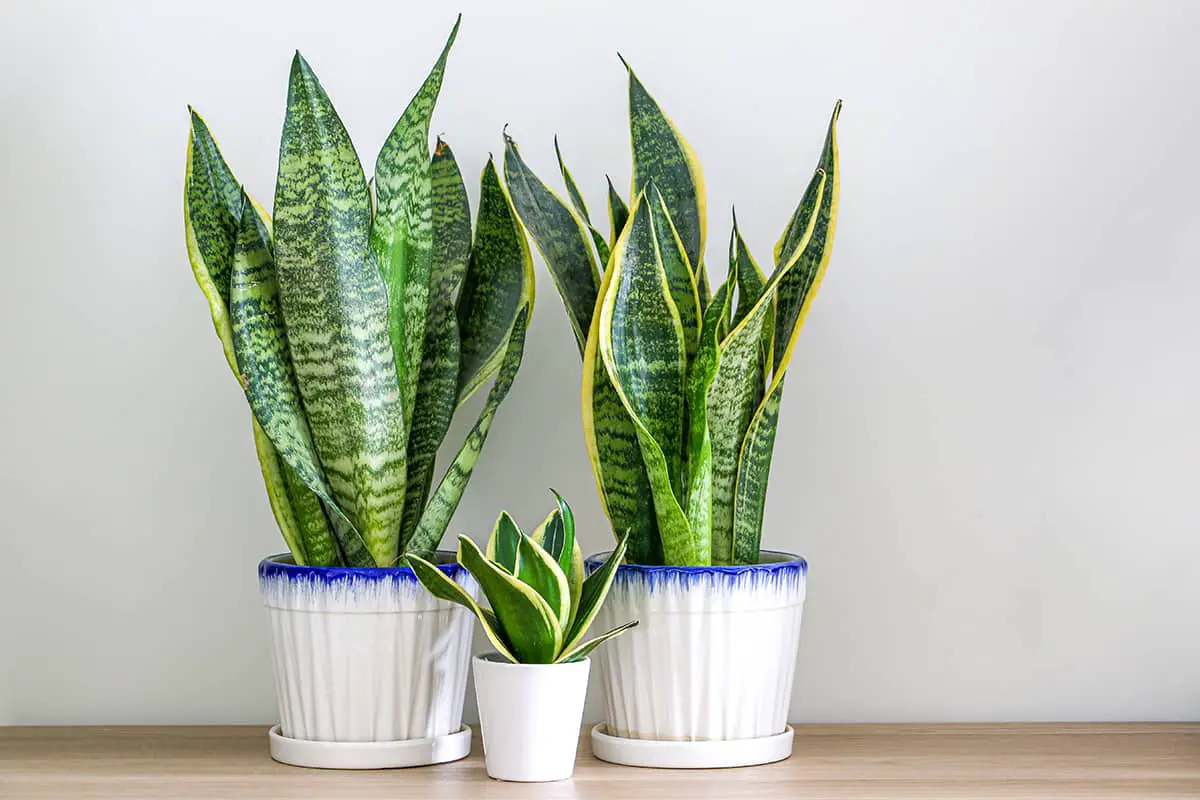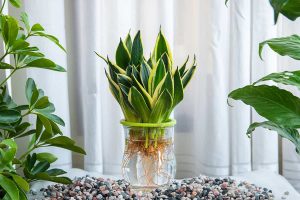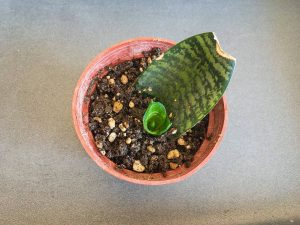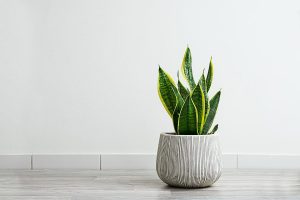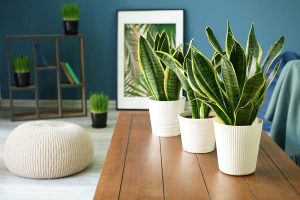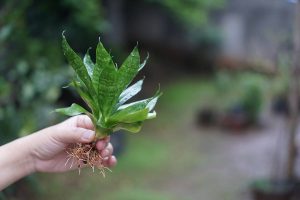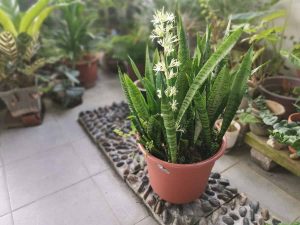Most of us consider plant pots as simply being the vessels that keep our plants contained, and often we think more about how they look rather than what type of care they can offer the plant.
Interestingly, the type of pot you choose can actually play a role in the health of your plant, so it’s something worth thinking about before you start the process of re-potting. Here we take a look at the best types of pots to use for a snake plant.
Without a doubt, the best type of pot for a snake plant is one made from terracotta. Terracotta is a ceramic material made from a clay-based mixture. The quality that makes terracotta especially well suited to use as a pot for snake plants is the fact that it is so porous.
This means that any excess water in the soil will be absorbed by the terracotta and drained away from the roots of the plant. The moisture that the terracotta is holding will then evaporate into the air.
Of course, snake plants can grow in other types of pots without any problems, but if you want the best chance of a thriving snake plant, consider the types of pots and how they can help care for the plant.
Table of Contents
Best Pots for Snake Plants
Snake plants are not fussy and actually thrive on neglect, but you can help keep them happy by choosing their pot wisely. The best type of pot for your snake plant can depend on whether it is grown indoors or outdoors.
Terracotta
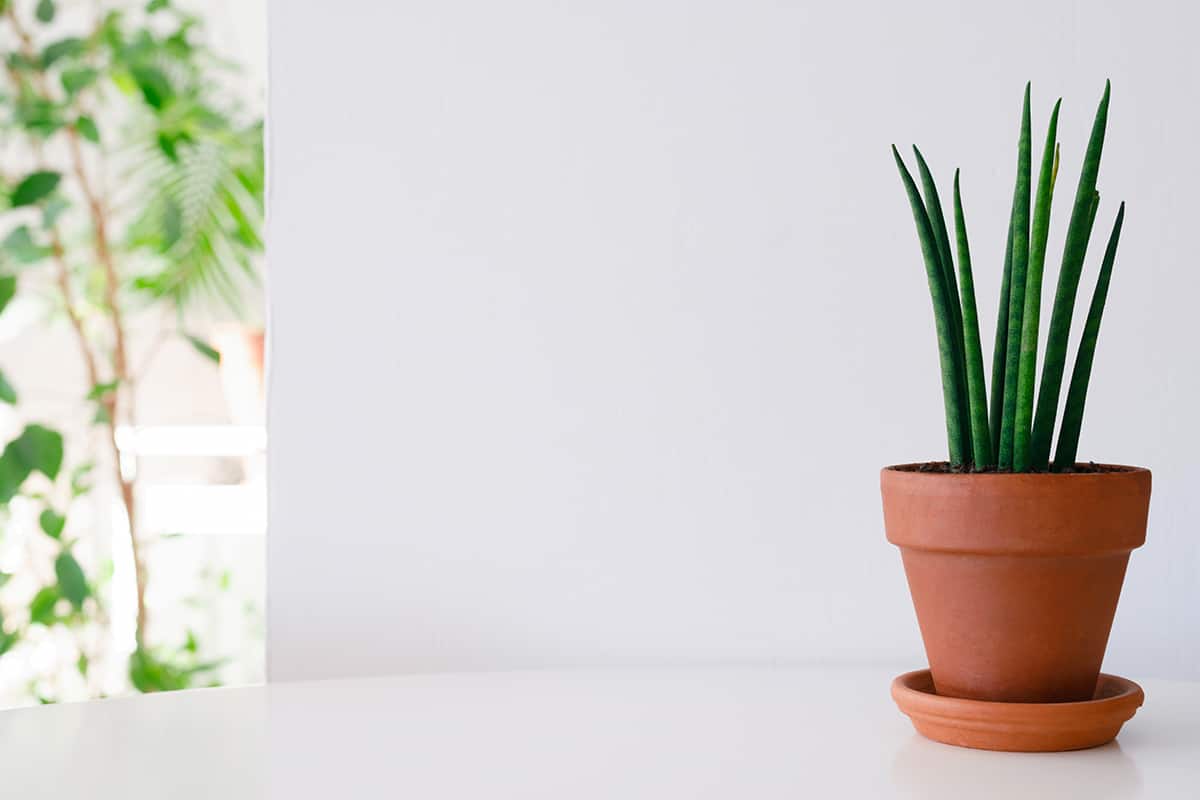
Terracotta is the best type of pot for a snake plant because it is porous and will absorb any excess moisture in the soil, therefore helping to prevent the roots of the snake plant from being too wet and rotting. When the moisture from the terracotta evaporates, the air around the plant will be more humid, benefitting the snake plant.
Terracotta pots are good for use indoors and outdoors, though they can be prone to breakage in very high levels of heat. If you are using a terracotta pot indoors, ensure it has a drainage hole in the base and set it on a saucer, so that excess water doesn’t drain out and make a mess.
Plastic
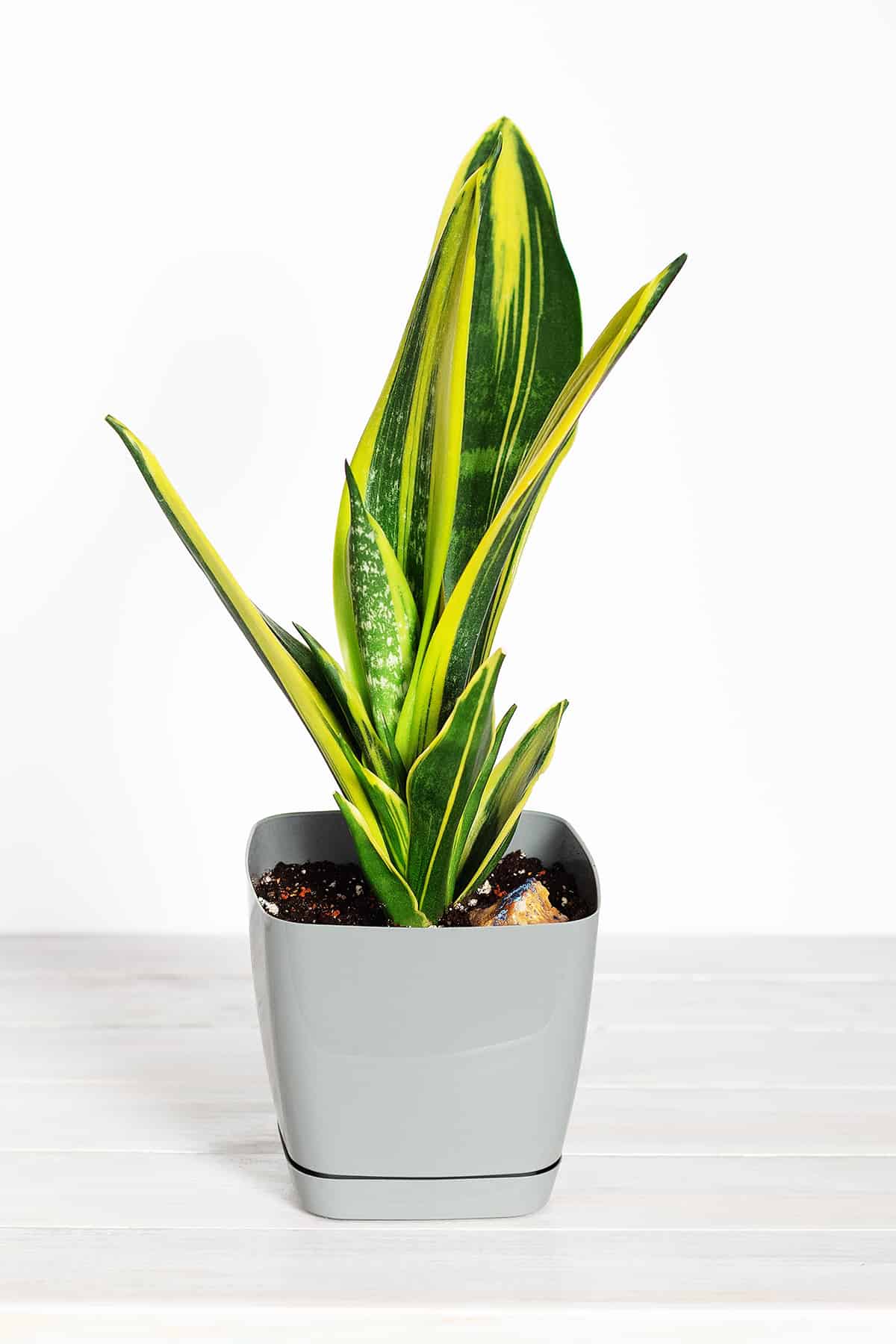
Plastic pots are widely used as the inner container for houseplants before being placed inside an outer container that is more decorative. This works well for houseplants, but it isn’t the best choice for snake plants kept outside. Unlike terracotta, plastic will not absorb any water, so you’ll need to be careful not to overwater the plant. Plastic pots must always have several drainage holes to allow water to escape.
Concrete
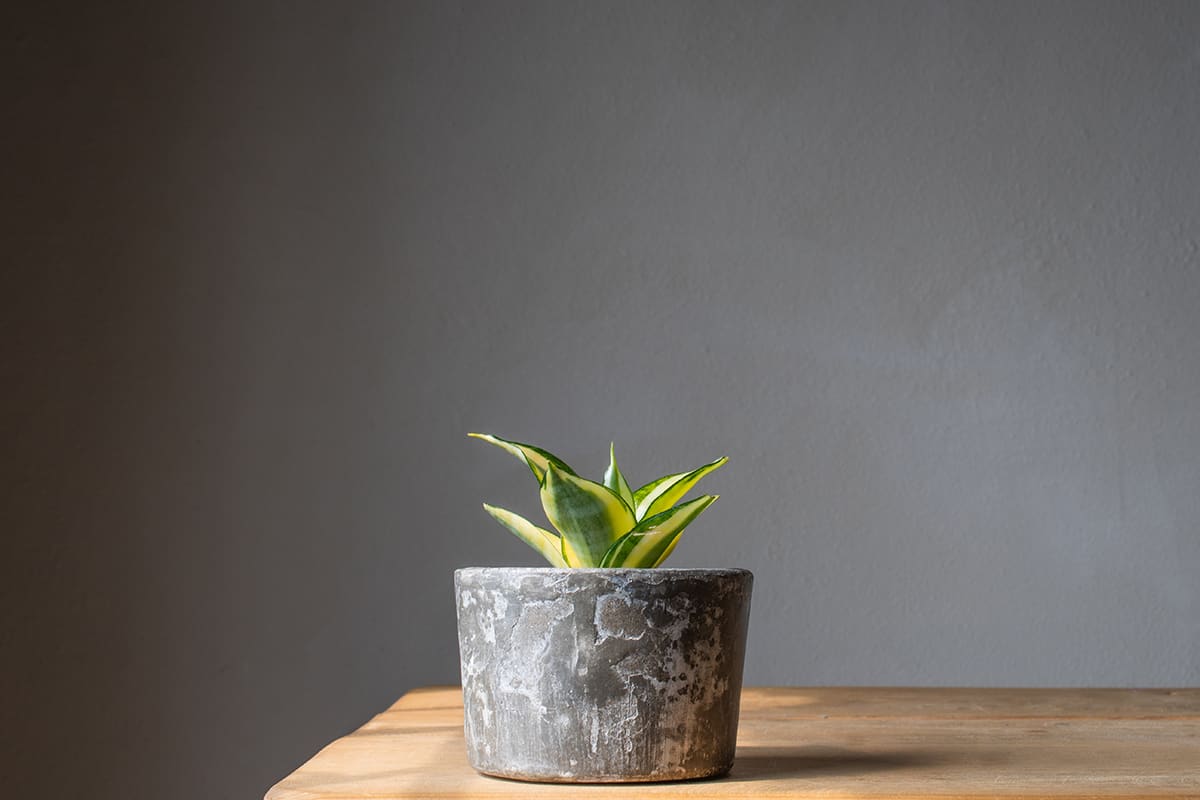
Concrete, like terracotta, is porous, so concrete pots and planters are a good choice for snake plants. Concrete is also a good insulator, so it will help to keep roots cool in summer and warm in winter. You can use concrete pots indoors and outdoors; just remember to ensure they have a drainage hole and a saucer. Concrete pots are, of course, very heavy, so if your snake plant is large, you may struggle to move it in a concrete pot.
Wood
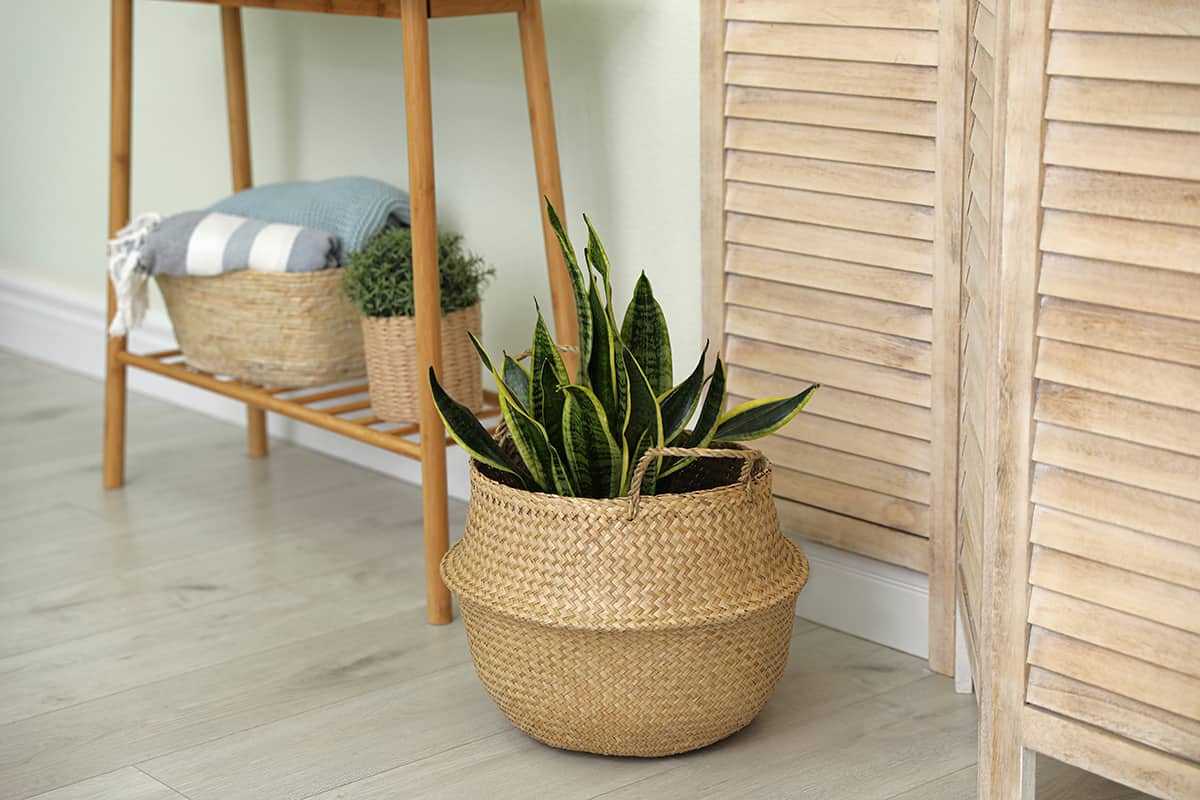
Wood can be used to make nice rustic-looking planters for outside, though you should ensure they are made from rot-resistant wood such as teak. Wood isn’t a good choice of material for the pot of an indoor snake plant because these pots are prone to leakages and could make quite a mess during the watering time.
Glazed ceramic
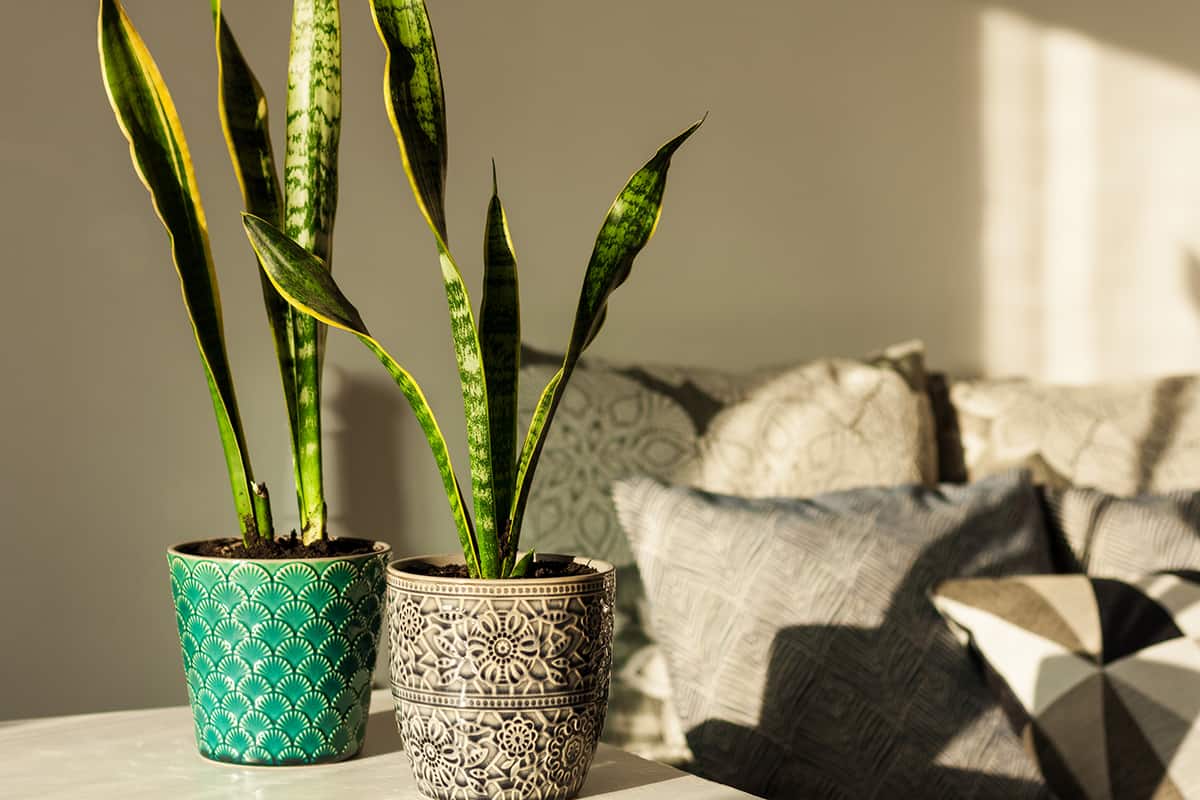
Glazed ceramic pots are popular for houseplants as a way of personalizing your plant or helping it to fit in with your decor. If you are using a glazed ceramic pot, you should also use an inner plastic pot.
This is because decorative pots do not usually have drainage holes, and drainage is absolutely essential for snake plants. Don’t ever repot a snake plant directly into a decorative pot with no drainage because it will be very susceptible to root rot.
Do Snake Plant Pots Need Drainage?
Yes, pots in which you are growing snake plants in should have drainage holes at the base. Drainage holes allow you to keep a check on whether you are watering the plant the right amount. When watering, you should wait until the water starts to seep out of the drainage holes and then stop.
This ensures the plant has gotten just enough water, but not too much. Without drainage holes, you won’t know when to stop watering. Drainage holes are also there so that excess water can drain away, rather than sitting in the bottom of a pot, drowning the roots of a plant. If your plant pot doesn’t have drainage holes in the bottom, you can create some by using a drill.
How Different Conditions Affect Snake Plant Pots
Understanding the type of conditions that a snake plant needs to thrive is going to help you make the best choice of pot for your plant. One type of pot does not suit all types of plants; instead, match a pot to the plant that will best cater to its required care conditions.
Water
Snake plants are considered to be semi-succulents because their long fleshy leaves store moisture. This means that snake plants are reasonably drought tolerant and can survive for some time in dry soil because they have a backup source of moisture in their foliage.
Snake plants do not like to be kept in wet soil, and this is where the importance of a pot can come in. Some pots offer features that encourage excess water to be kept away from the roots of the plant, which is important in the prevention of root rot.
Temperature
Snake plants are native to Nigeria, where they are accustomed to hot weather all year round. They can be kept outside in USDA hardiness zones 9 through 11, but outside of these zones, they should be grown as houseplants. Snake plants love the typical temperatures of homes because they closely replicate the temperatures of their native habitats.
Consistent temperatures are important, which is another way pots can be used to aid the health of the plant. Some pots are good insulators, which will help keep the roots protected from cooler temperatures.
Repotting
Snake plants are slow growing, and as a result, they do not need to be repotted very often. Added to this, snake plants actually prefer to be root bound in their pots, so repotting is not something you should have to do very often. At most, a snake plant will need to be repotted every 4 or 5 years.
You will know when it is ready because the roots will start to emerge out of the pot’s drainage holes. Always ensure the new pot you move your snake plant to is only 1 or 2 sizes bigger than its current pot. A pot that is too big for the roots will take too long to drain and hold onto water for longer, which is another way that root rot can set in and cause the death of the plant.
Humidity
Snake plants enjoy high levels of humidity, but they can also thrive in low-humidity settings. Some pots, which are porous and are able to absorb moisture from the soil they contain, can actually help to increase humidity levels. This is because when the moisture absorbed by the pot evaporates, it will create a higher level of humidity around the plant.
